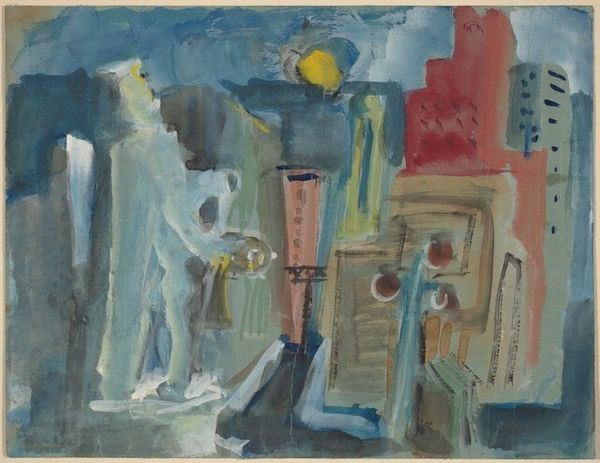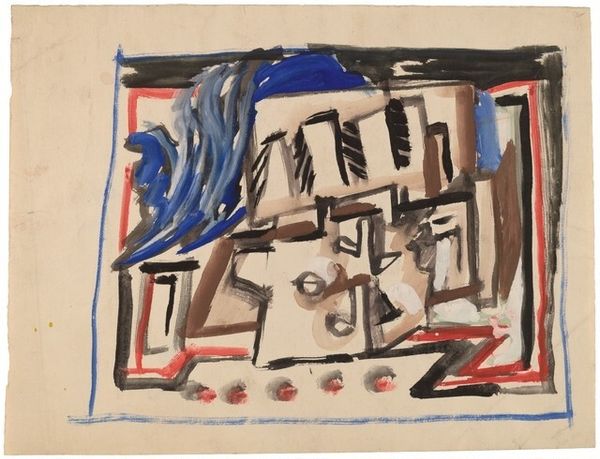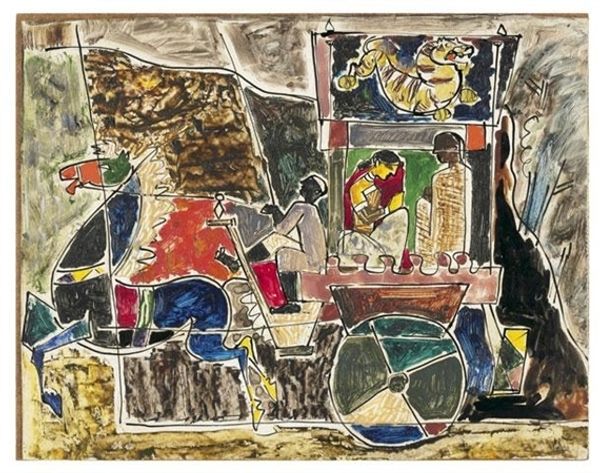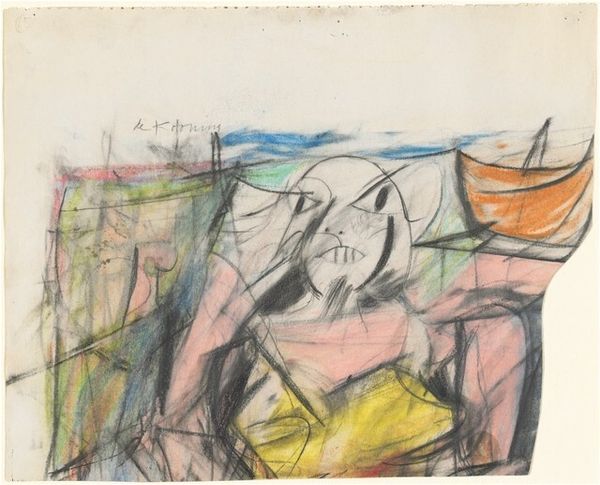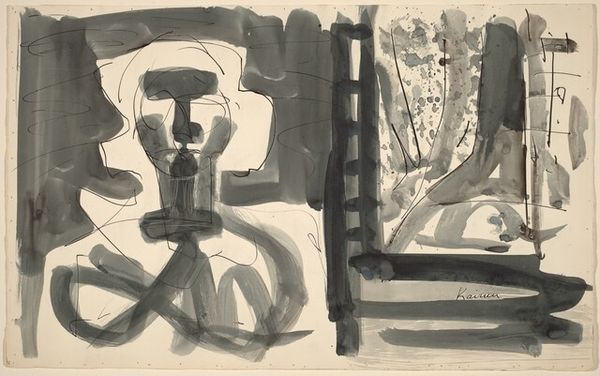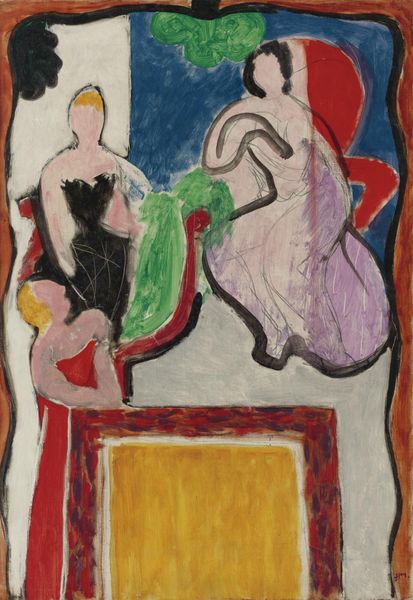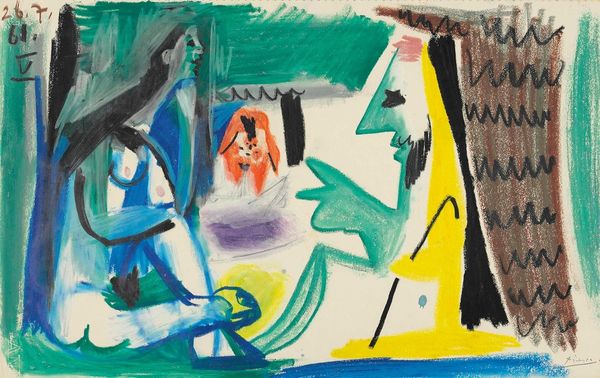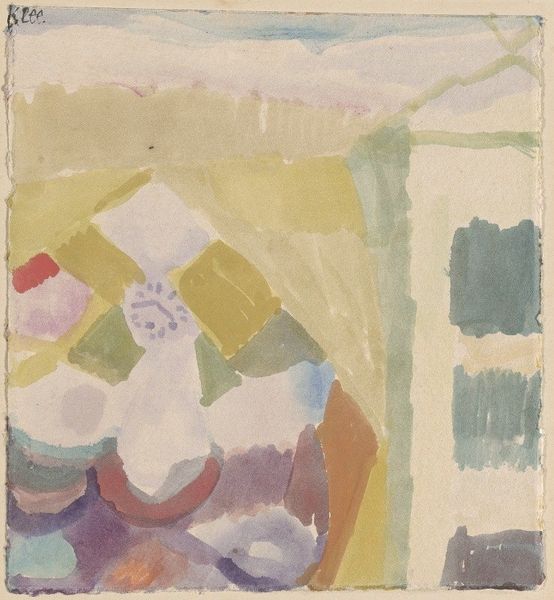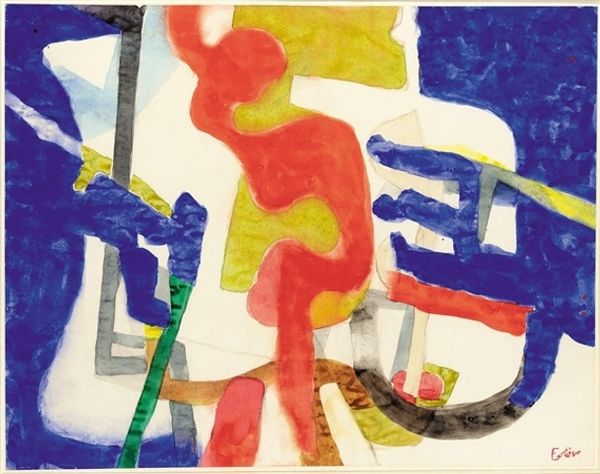![Still Life [recto] by Mark Rothko](/_next/image?url=https%3A%2F%2Fd2w8kbdekdi1gv.cloudfront.net%2FeyJidWNrZXQiOiAiYXJ0ZXJhLWltYWdlcy1idWNrZXQiLCAia2V5IjogImFydHdvcmtzLzM5MjJkZTUzLTkzZTctNGJiOS04ZTExLWFiYzJkMzkwMTM2YS8zOTIyZGU1My05M2U3LTRiYjktOGUxMS1hYmMyZDM5MDEzNmFfZnVsbC5qcGciLCAiZWRpdHMiOiB7InJlc2l6ZSI6IHsid2lkdGgiOiAxOTIwLCAiaGVpZ2h0IjogMTkyMCwgImZpdCI6ICJpbnNpZGUifX19&w=1920&q=75)
drawing, watercolor
#
drawing
#
water colours
#
figuration
#
watercolor
#
expressionism
#
modernism
Copyright: National Gallery of Art: CC0 1.0
Curator: This intriguing work is titled "Still Life [recto]" by Mark Rothko, executed in watercolor. The precise date is currently unknown, yet it pulses with an undeniable raw energy. Editor: My first impression is its surprisingly playful, even whimsical for Rothko. The vibrant, almost haphazard blocks of color—the cerulean blue, ochre yellow, rose madder pink—feel so unlike the solemn, meditative fields he's known for. Curator: Precisely! Let's delve into how this still life subverts expectations. The work presents an ensemble of sculptural forms: on the left, we discern what appears to be fragments of classical statuary; central is what appears to be a bust of a female in profile; to the right, another indeterminate form, vaguely anatomical in appearance. Rothko here interrogates Western art’s historic objectification and idealization of the female form and the classical fixation with perfect form, echoing through the post-war, gendered-political and philosophical discourses, critiquing power dynamics prevalent then and still today. Editor: Absolutely. I am struck by how Rothko reduces each element to its essential planar shape and volume. Notice, how his technique focuses the eye not just on form, but how the medium acts as an integral structure through a kind of haptic transparency that is less interested in representation and more absorbed in the interplay of tonal balance. Curator: Agreed. The watercolor technique feels very significant. Rothko layers the translucent pigments and this lends a spectral quality to the arrangement and heightens its conceptual charge as spectral or phantom narratives emerge within their construction of representation. Rothko invites us to examine what cultural assumptions operate on representations of the body itself. Editor: There is an interesting relationship here. Through compositional organization, he directs the viewer to perceive each structure’s tonal variance by building contrast via compositional proximity, each planar relationship creates an interesting dialog— Curator: Precisely; he's encouraging us to look at art objects anew, through the lens of social context and ideology critique. Rothko, it can be argued, sets art as an intersectional platform to engage critical conversations and promote progressive change. Editor: It has provided a valuable insight into an early part of the artist's stylistic journey as well as how to assess painting with an astute eye to form and method.
Comments
No comments
Be the first to comment and join the conversation on the ultimate creative platform.

